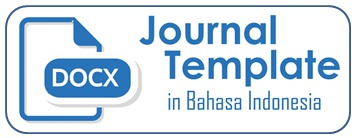LITERASI DIGITAL DI SEKOLAH
Perilaku Konsumsi Media Sosial Siswa/Siswi Madrasah Aliyah di Kabupaten Bangka
Abstract
This study aims to describe the behavior of social media consumption, find the positive and negative impacts of using social media on students at Madrasah Aliyah in Bangka Regency and find out the role and school policies on the use of social media in students. This study uses a qualitative descriptive approach with in-depth interviews with students, teachers and madrasah principals in three madrasas, namely Madrasah Aliyah Negeri 1 Bangka, Madrasah Aliyah Kemuja and Madrasah Aliyah Nurul Ihsan as informants. Based on the results of interviews, it was found that: 1) the social media consumption behavior of students has reached the technopoly stage, where the whole series of their lives have been heavily influenced by technology, especially social media, 2) social media can facilitate the learning process, facilitate interaction, add insight and support learning materials, but addiction, laziness, exposure to pornography and disturbing concentration are negative impacts of using social media, 3) prohibiting the use of smartphones in the classroom during learning.
Downloads
References
Doni, Fahlepi Roma, ‘Perilaku Penggunaan Media Sosial Pada Kalangan Remaja’, Indonesian Journal on Software Engineering, 3.2 (2017), 15 <https://ejournal.bsi.ac.id/ejurnal/index.php/ijse/article/view/2816>
Elvinaro, Ardianto, Komunikasi Massa: Suatu Pengantar (Bandung: Simbiosa Rekatama Media, 2004)
Fitri, Sulidar, ‘Dampak Positif Dan Negatif Sosial Media Terhadap Perubahan Sosial Anak’, NATURALISTIC : Jurnal Kajian Penelitian Pendidikan Dan Pembelajaran, 1.2 (2017), 118–23 <https://doi.org/10.35568/naturalistic.v1i2.5>
Fitryarini, Inda, Rina Juwita, and Purwaningsih Purwaningsih, ‘Model Literasi Media Berbasis Kearifan Lokal Pada Suku Dayak Tunjung Dan Dayak Benuaq Di Kutai Barat’, Jurnal Ilmu Sosial Dan Ilmu Politik, 17.3 (2016), 210 <https://doi.org/10.22146/jsp.13085>
Kemp, Simon, ‘Digital 2021: Indonesia’, Datareportal.Com, 2021 <https://datareportal.com/reports/digital-2021-indonesia>
Krisnawati, Ester, ‘Perilaku Konsumsi Media Oleh Kalangan Remaja Dalam Pencarian Informasi’, Komunikatif, 5.1 (2016), 43 <https://www.neliti.com/id/publications/232180/perilaku-konsumsi-media-oleh-kalangan-remaja-dalam-pencarian-informasi-studi-kas >
Maifianti, Khori Suci, Rahma Hidayati, and Fiandy Mauliansyah, ‘Literasi Digital Dan Etika Bermedia Sosial Kalangan Pelajar Di Sman Wira Bangsa Aceh Barat’, Community Development Journal : Jurnal Pengabdian Masyarakat, 2.2 (2021), 301 <https://doi.org/10.31004/cdj.v2i2.1716>
Nugroho, Sarwo, Manajemen Warna Dan Desain (Yogyakarta: CV Andi Offset, 2015)
Peter, J. Paul & Jerry C. Olson, Consumer Behavior, Perilaku Konsumen Dan Strategi Pemasaran, ed. by Damos Sihombing dan Peter Remy Yossi Pasla, Keempat (Jakarta: Erlangga, 1999)
Putro, Fanny Hendro Aryo, ‘PERILAKU PENGGUNAAN MEDIA SOSIAL DAN IDENTITAS DIRI (Studi Deskriptif Kualitatif Tentang Perilaku Penggunaan Media Sosial Dan Identitas Diri Di Kalangan Mahasiswa S1 Jurusan Komunikasi Universitas Slamet Riyadi Surakarta)’, Transformasi, 2.32 (2017), 945
Rahman, Adi Fida, ‘771 Hoax Berhasil Diidentifikasi Kominfo’, Detik.Com, 2019 <https://kominfo.go.id/content/detail/16922/771-hoax-berhasil-diidentifikasi-kominfo/0/sorotan_media>
Rivers, William L., Media Massa Dan Masyarakat Modern (Jakarta: Prenada Media, 2008)
Rullie Nasrullah, Dkk, Gerakan Literasi Nasional (Jakarta: Kementerian Pendidikan dan Kebudayaan, 2017)
Soekanto, Soerjono, Sosiologi: Suatu Pengantar (Jakarta: Raja Grafindo Persada, 2001)
Soliha, Silvia Fardila, ‘Tingkat Ketergantungan Pengguna Media Sosial Dan Kecemasan Sosial’, INTERAKSI: Jurnal Ilmu Komunikasi, 4.1 (2015), 2
Tilar, H.A.R., Kekuasaan Pendidikan: Kajian Manajemen Pendidikan Nasional Dalam Pusaran Kekuasaaan (Jakarta: Rinika Cipta, 2009)
Tim APJII, ‘Laporan Survei Internet APJII 2019 - 2020 [Q2]’, Apjii.or.Id, 2020 <https://apjii.or.id/survei>
Totok Wahyu Abadi, ‘Media Sosial Dan Pengembangan Hubungan Interpersonal Remaja Di Sidoarjo’, Kanal, 2.2 (2013), 95 <http://ojs.umsida.ac.id/index.php/kanal/article/view/278/264 >
Copyright Notice
Komunikasia: Journal of Islamic Broadcasting and Communication is under the Creative Commons Attribution 4.0 International (CC-BY 4.0) License, according to which:
1) Authors retain copyright and grant the journal the right to first publication, with the work simultaneously licensed under the Creative Commons Attribution (CC-BY 4.0) that allows the sharing of articles published with the acknowledgment of authorship and the initial publication in this journal.
2) The authors are authorized to make additional contracts separately for distribution of the version of the work published in this journal (for example, publication in an institutional repository or as a chapter of the book), as long as there is recognition of authorship and initial publication in this journal.
3) Authors are authorized and encouraged to publish and distribute their work online (for example, in institutional repositories or on their personal pages) at any time before or during the editorial process, as it increases the impact and reference of the published work.



















